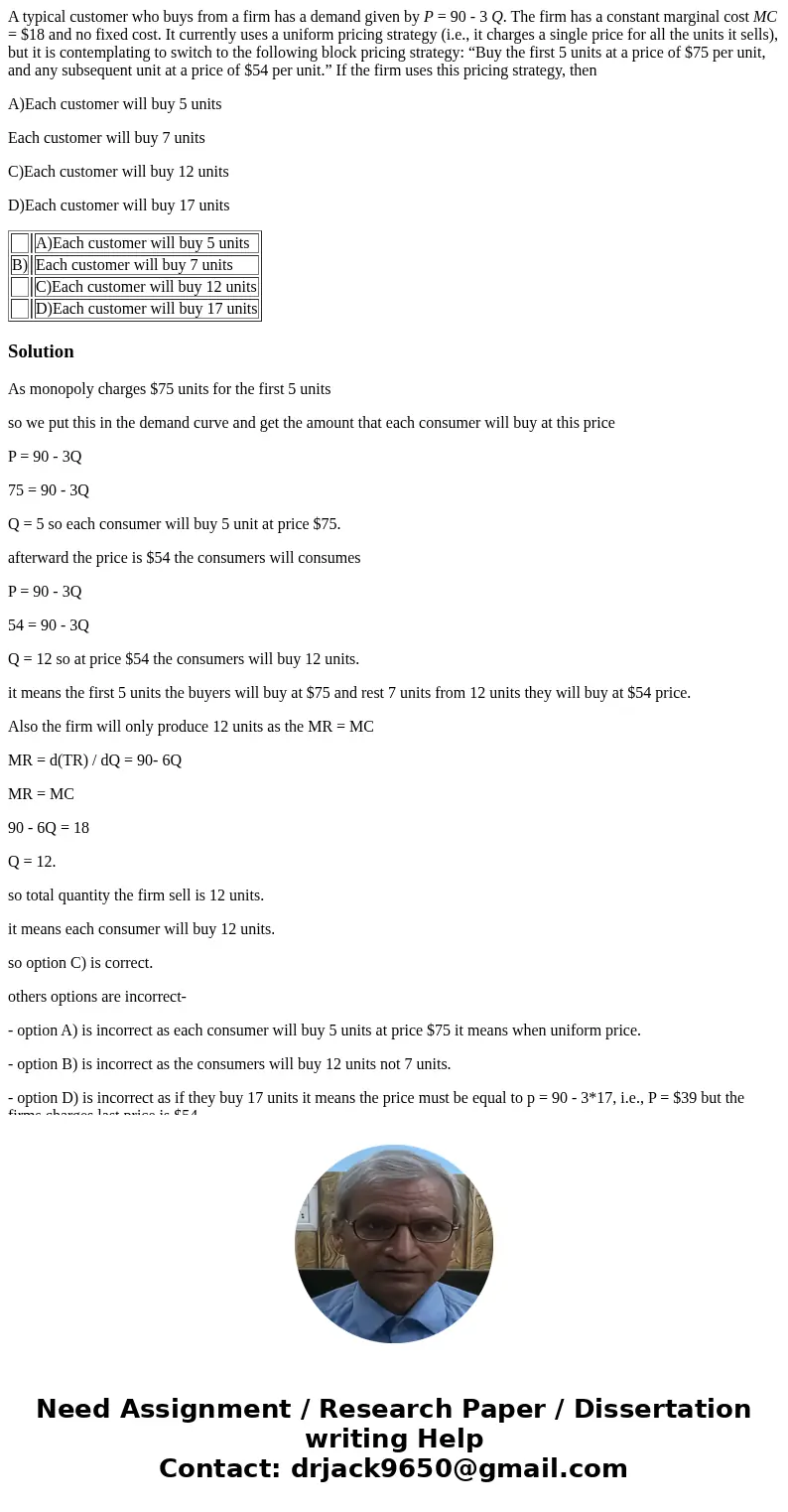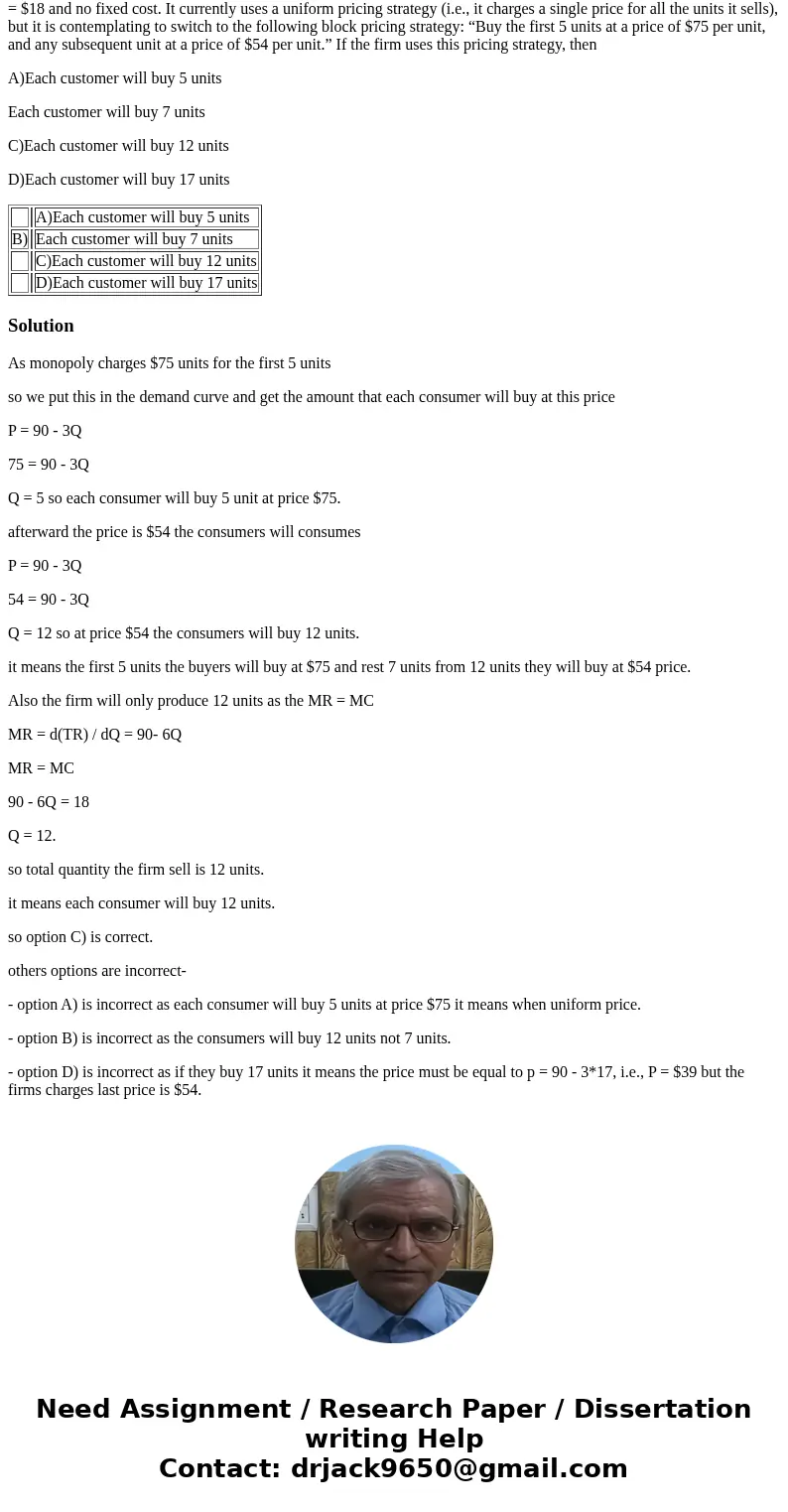A typical customer who buys from a firm has a demand given b
A typical customer who buys from a firm has a demand given by P = 90 - 3 Q. The firm has a constant marginal cost MC = $18 and no fixed cost. It currently uses a uniform pricing strategy (i.e., it charges a single price for all the units it sells), but it is contemplating to switch to the following block pricing strategy: “Buy the first 5 units at a price of $75 per unit, and any subsequent unit at a price of $54 per unit.” If the firm uses this pricing strategy, then
A)Each customer will buy 5 units
Each customer will buy 7 units
C)Each customer will buy 12 units
D)Each customer will buy 17 units
| A)Each customer will buy 5 units | ||
| B) | Each customer will buy 7 units | |
| C)Each customer will buy 12 units | ||
| D)Each customer will buy 17 units |
Solution
As monopoly charges $75 units for the first 5 units
so we put this in the demand curve and get the amount that each consumer will buy at this price
P = 90 - 3Q
75 = 90 - 3Q
Q = 5 so each consumer will buy 5 unit at price $75.
afterward the price is $54 the consumers will consumes
P = 90 - 3Q
54 = 90 - 3Q
Q = 12 so at price $54 the consumers will buy 12 units.
it means the first 5 units the buyers will buy at $75 and rest 7 units from 12 units they will buy at $54 price.
Also the firm will only produce 12 units as the MR = MC
MR = d(TR) / dQ = 90- 6Q
MR = MC
90 - 6Q = 18
Q = 12.
so total quantity the firm sell is 12 units.
it means each consumer will buy 12 units.
so option C) is correct.
others options are incorrect-
- option A) is incorrect as each consumer will buy 5 units at price $75 it means when uniform price.
- option B) is incorrect as the consumers will buy 12 units not 7 units.
- option D) is incorrect as if they buy 17 units it means the price must be equal to p = 90 - 3*17, i.e., P = $39 but the firms charges last price is $54.


 Homework Sourse
Homework Sourse